Porto Novo is the official capital of Benin. The second-largest city after Cotonou is Porto Novo, also known as “Hogbonou” and “Adjacé.” Located in the southeast of Benin, Porto Novo is one of the ports in the Gulf of Guinea.

The Benin parliament is in the official capital of Porto Novo. Cotonou, however, is the center of government, along with most government ministries.
Where is Porto Novo?
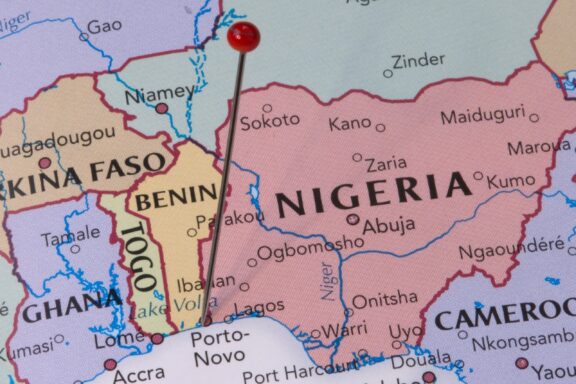
Porto-Novo, nestled in the southeastern region of Benin near the Nigerian border, is perched on an inlet of the Gulf of Guinea.
Its location not only adds to its geographical charm, but also significantly influences its environment and economy. The city’s proximity to Lake Nokoué and the Ouémé River plays a crucial role in shaping its landscape and contributing to its economic activities.
History of Porto Novo
Porto-Novo, which translates to “New Port” in Portuguese, has a rich and diverse history. The city’s past is marked by several significant events and periods that have shaped its current state.
The city was initially known as Hogbonu/Ajashe by its indigenous Gun inhabitants. It was established as a community by King Te-Agdanlin in the late 16th century or early 17th century. The Portuguese, attracted by its strategic location for the slave trade, later named it Porto-Novo.
During the 18th century, the city became an important port for the Atlantic slave trade. The Portuguese, English, French, and Dutch all sought control of Porto-Novo due to its significance in the slave trade. In the late 19th century, the French secured power over the city, and it became a French protectorate, along with the rest of what would become Benin.
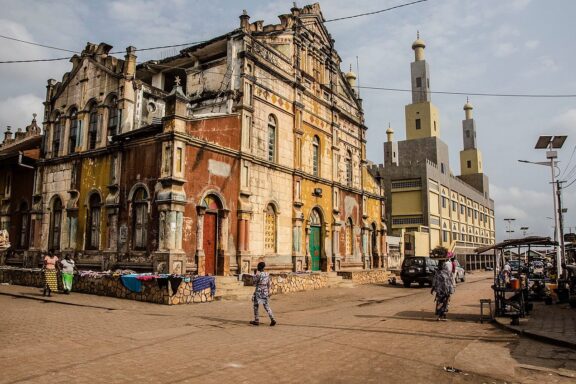
Benin gained independence from France on August 1, 1960. Despite not being the largest city in the country (Cotonou holds that title), Porto-Novo was designated the official capital of the newly independent nation.
Today, Porto-Novo is a city that bears witness to its diverse history and colonial past. Its architecture is a mix of Afro-Brazilian, colonial, and traditional, which mirrors the city’s historical periods. The city is also the cultural and administrative capital of Benin.
The cultural heritage of Porto-Novo includes traditions like the Gelede masked dance, recognized by UNESCO as a Masterpiece of the Oral and Intangible Heritage of Humanity. The city is also known for its music, particularly Sato, played at funerals, using a large drum covered in antelope skin.
Features of Porto Novo
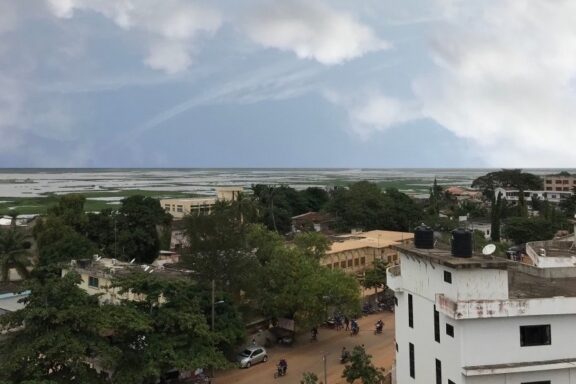
Porto-Novo, the capital of Benin, is a vibrant city marked by its rich history, diverse architecture, and unique culture.
Geography and Climate
Porto-Novo is located in the southeastern region of Benin, specifically in the Ouémé Department. It’s positioned near the Gulf of Guinea. The area is mainly characterized by flat coastal plains.
The area surrounding the town is characterized by lagoons, swamps, and floodplains, making it a region rich in biodiversity.
As for the climate, Porto-Novo is in a tropical zone and experiences a tropical wet and dry climate. It has two rainy seasons (April-July and September-November) and two dry seasons.
Benin is one of the hottest countries in the world, with high average temperatures high throughout the year, typical of West African climates.
Population
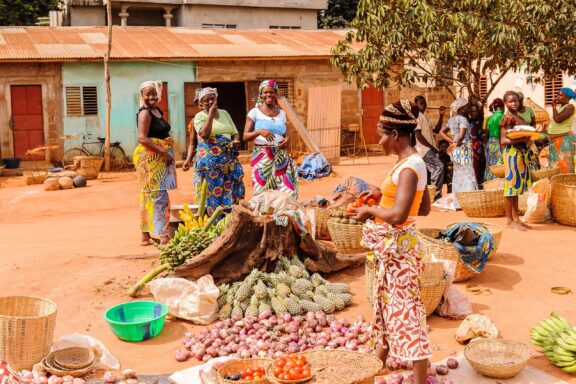
Porto Novo has a population of around 300,000 people in 2022. The inhabitants of Porto-Novo are ethnically diverse. Predominant groups include the Yoruba, Goun, and Aja ethnic groups.
French is the official language of Benin, but local languages like Yoruba, Fon, and Goun are widely spoken. Religion in Porto-Novo is diverse, with many inhabitants practicing Vodun, Christianity, or Islam.
Economy
Porto-Novo’s economy is largely based on agriculture, trade, and manufacturing. The city serves as a center for palm oil processing and producing textiles and soap.
Agriculture in the surrounding rural areas focuses primarily on crops like cassava, cotton, and yams. The city’s coastal and riverside location plays a significant economic role. The nearby Lake Nokoué and Ouémé Rivers are essential for fishing and also support other activities such as sand extraction.
Moreover, Porto-Novo’s status as the administrative capital of Benin also means that government and public administration contribute significantly to the local economy.
Remember that economic, demographic, and geographical information can change, and the most recent data should be sought for current and detailed analysis.
Things to Do and Places to See in Porto Novo
Due to the potential for violent incidents, including armed robbery, assault, and maritime crime like violent attacks and kidnapping, it’s advised to exercise caution while traveling in Porto Novo.
If you do decide to visit Porto Novo, here are some of the city’s most frequented and highly recommended attractions and destinations to discover:
1. Ethnographic Museum
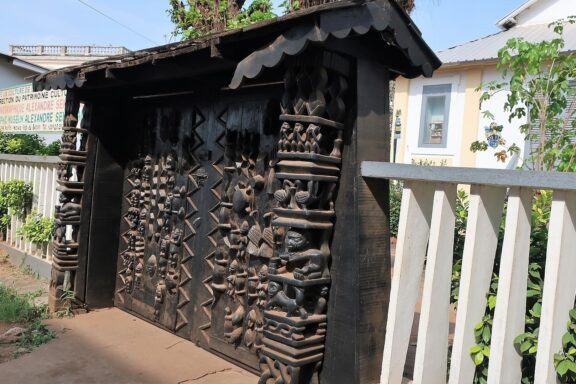
The Musée Ethnographique de Porto-Novo houses a rich collection of artifacts showcasing the city’s cultural heritage. It allows visitors to learn more about the Yoruba people, who have significantly influenced the city’s culture. Exhibits include ceremonial masks, costumes, religious items, and musical instruments.
2. Da Silva Museum
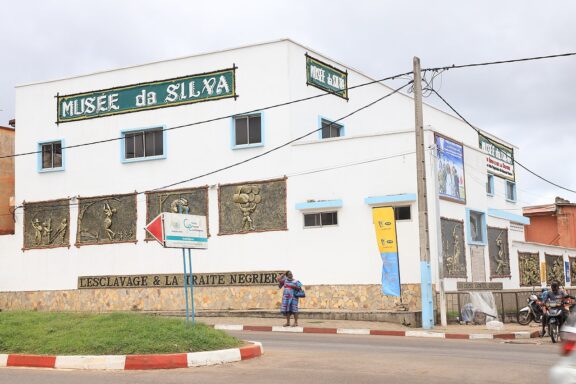
The Musée da Silva is a significant cultural landmark in Porto-Novo, tracing the history and influence of the Afro-Brazilian community in Benin. The museum is housed in a 19th-century Afro-Brazilian building, showcasing an array of artifacts and historical narratives, illustrating the connections between Africa, Brazil, and Portugal.
3. Jardin Place Jean Bayol
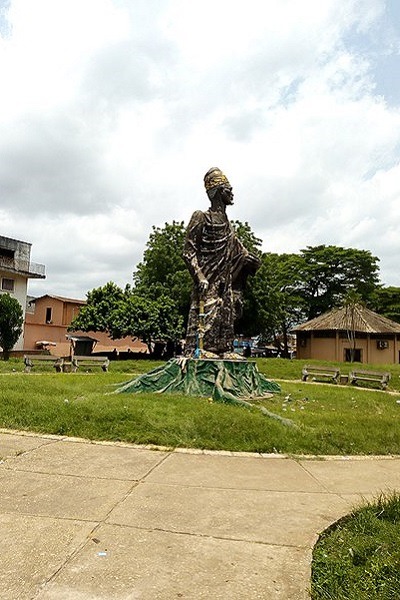
Jardin Place Jean Bayol is a beautiful public garden in the heart of Porto-Novo. The palace was named after a French colonial administrator, and it’s a serene space for relaxation and people-watching. It’s a great place to soak in the local atmosphere and admire the surrounding colonial architecture.
4. The Great Mosque of Porto-Novo
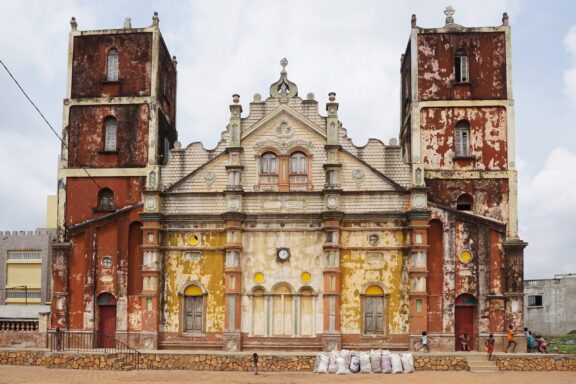
Originally built as a church in the early 20th century, this building was later converted into a mosque. It is noted for its unique architecture, which blends Soudano-Sahelian and Afro-Brazilian styles, indicative of the city’s diverse cultural influences.
5. King Toffa’s Palace (Musée Honmé)
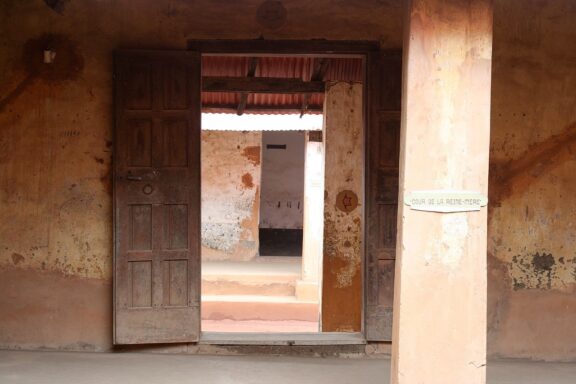
Once the royal palace of King Toffa, this site is now a museum known as the Musée Honmé. The museum provides a glimpse into royal life during King Toffa’s reign and showcases the Porto-Novo kingdom’s history. It includes displays of royal chambers, shrines, and traditional crafts.
Always confirm the visiting hours and any entry requirements before planning a visit to these sites, as these may vary or be impacted by local events or holidays.
Image Sources and Copyright Information
- image-112: © Mappr
- Map Highlighting the Location of Porto-Novo in Benin: © Below the Sky/Shutterstock
- Street View with Mosque and Colonial Building in Porto-Novo: © J. P. H. Ahissou/Wikimedia | CC BY-SA 4.0 International
- Aerial View of Porto-Novo Cityscape: © Élisée.Adad/Wikimedia | CC BY-SA 4.0 International
- Local Market Scene in Porto-Novo: © Anton_Ivanov/Shutterstock
- Traditional Carved Wooden Facade of Ethnographic Museum in Porto-Novo: © Kulttuurinavigaattori/Wikimedia | CC BY-SA 4.0 International
- Museu Da Silva in Porto-Novo: © Ksperentos/Wikimedia | CC BY-SA 4.0 International
- Statue in Public Park: © Adoscam/Wikimedia | CC BY-SA 4.0 International
- Facade of the Great Mosque of Porto-Novo: © traveloskop/Shutterstock
- Entrance to King Toffa’s Palace in Porto-Novo: © Dominik Schwarz/Wikimedia | CC BY-SA 3.0 Unported